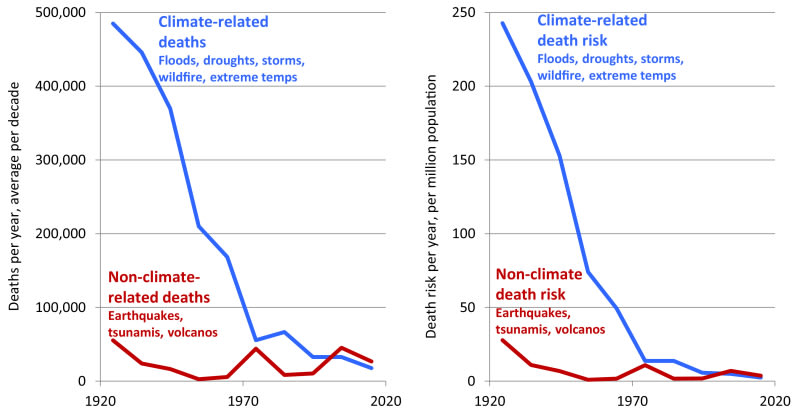I recently came across Bjorn Lomborg’s 2020 article Welfare in the 21st century: Increasing development, reducing inequality, the impact of climate change, and the cost of climate policies. It runs counter to many things I have heard about climate change. For example, it contains the below chart, which I found very surprising:

The abstract reads:
Climate change is real and its impacts are mostly negative, but common portrayals of devastation are unfounded. Scenarios set out under the UN Climate Panel (IPCC) show human welfare will likely increase to 450% of today's welfare over the 21st century. Climate damages will reduce this welfare increase to 434%.
Arguments for devastation typically claim that extreme weather (like droughts, floods, wildfires, and hurricanes) is already worsening because of climate change. This is mostly misleading and inconsistent with the IPCC literature. For instance, the IPCC finds no trend for global hurricane frequency and has low confidence in attribution of changes to human activity, while the US has not seen an increase in landfalling hurricanes since 1900. Global death risk from extreme weather has declined 99% over 100 years and global costs have declined 26% over the last 28 years.
Arguments for devastation typically ignore adaptation, which will reduce vulnerability dramatically. While climate research suggests that fewer but stronger future hurricanes will increase damages, this effect will be countered by richer and more resilient societies. Global cost of hurricanes will likely decline from 0.04% of GDP today to 0.02% in 2100.
Climate-economic research shows that the total cost from untreated climate change is negative but moderate, likely equivalent to a 3.6% reduction in total GDP.
Climate policies also have costs that often vastly outweigh their climate benefits. The Paris Agreement, if fully implemented, will cost $819–$1,890 billion per year in 2030, yet will reduce emissions by just 1% of what is needed to limit average global temperature rise to 1.5°C. Each dollar spent on Paris will likely produce climate benefits worth 11¢.
Long-term impacts of climate policy can cost even more. The IPCC's two best future scenarios are the “sustainable” SSP1 and the “fossil-fuel driven” SSP5. Current climate-focused attitudes suggest we aim for the “sustainable” world, but the higher economic growth in SSP5 actually leads to much greater welfare for humanity. After adjusting for climate damages, SSP5 will on average leave grandchildren of today's poor $48,000 better off every year. It will reduce poverty by 26 million each year until 2050, inequality will be lower, and more than 80 million premature deaths will be avoided.
Using carbon taxes, an optimal realistic climate policy can aggressively reduce emissions and reduce the global temperature increase from 4.1°C in 2100 to 3.75°C. This will cost $18 trillion, but deliver climate benefits worth twice that. The popular 2°C target, in contrast, is unrealistic and would leave the world more than $250 trillion worse off.
The most effective climate policy is increasing investment in green R&D to make future decarbonization much cheaper. This can deliver $11 of climate benefits for each dollar spent.
More effective climate policies can help the world do better. The current climate discourse leads to wasteful climate policies, diverting attention and funds from more effective ways to improve the world.
Is Lomborg right?